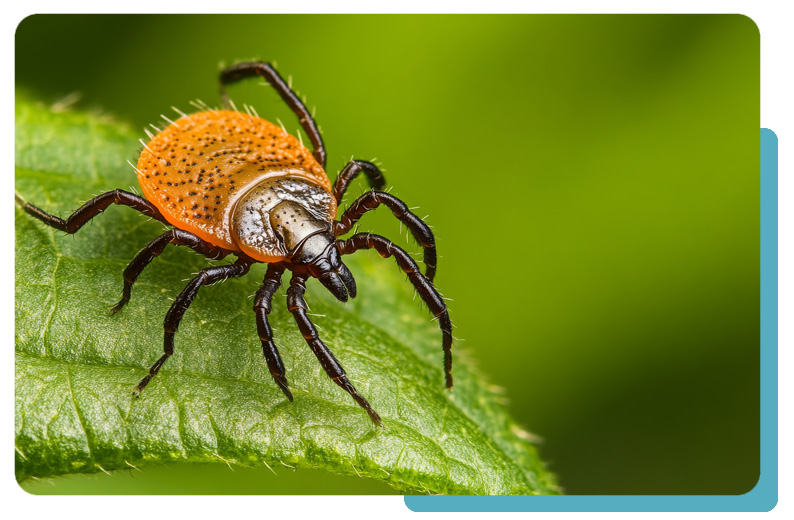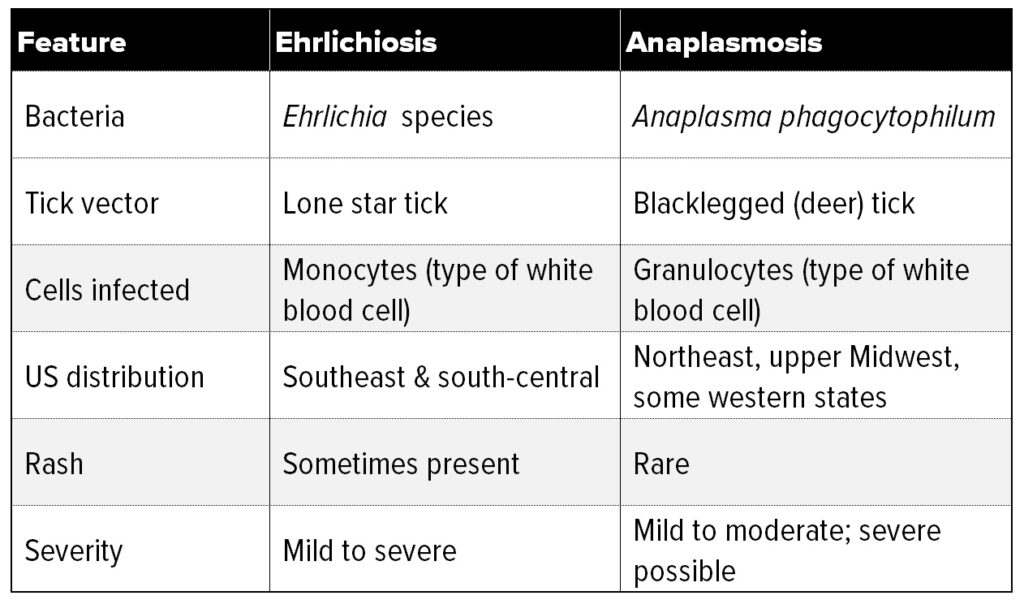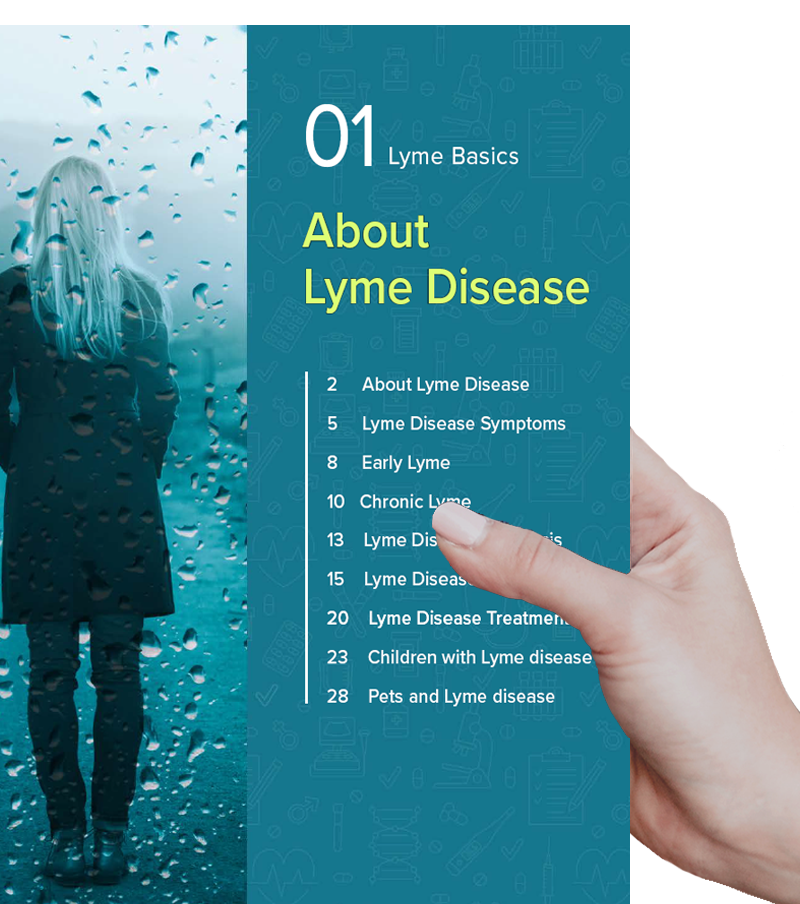Recognizing Ehrlichiosis
Ehrlichiosis is transmitted primarily by the lone star tick, found in the southeastern and southcentral U.S.

Ehrlichiosis Mimics Other Illnesses
Ehrlichiosis is a tick-borne infection caused by bacteria called Ehrlichia (including E. chaffeensis, E. ewingii, or E. muris eauclairensis), which infect white blood cells. Ehrlichia is spread primarily by the lone star tick, found in the southeastern and south-central U.S. Ehrlichiosis symptoms usually begin within one to two weeks after a tick bite and can range from mild to severe, if not treated promptly. Because ehrlichiosis symptoms often overlap with other common illnesses, it can be easily overlooked.
The most common ehrlichiosis symptoms include fever, headache, and malaise.

The most common ehrlichiosis symptoms include fever, headache, and malaise.
Early Symptoms (Days 1–5):
-
Fever, chills, headache, muscle aches
-
Gastrointestinal symptoms (nausea, vomiting, diarrhea, loss of appetite)
-
Confusion
-
Rash
The rash is more common in children (up to 60%) compared to adults (<30%). It usually appears about 5 days after symptom onset and may be present on the palms and soles of feet. The rash can be splotchy red patches or pinpoint dots.
Later or Severe Symptoms (if treatment is delayed):
-
Neurological damage (for example, meningoencephalitis)
-
Respiratory failure
-
Uncontrolled bleeding
-
Organ failure, which may lead to death

Ehrlichiosis is on the rise in the US

Ehrlichiosis: Diagnosis and Treatment
Ehrlichia, the bacterium that causes ehrlichiosis, is transmitted through tick bites and infects white blood cells. While most cases can be treated successfully, diagnosing early is imperative, since the infection can progress rapidly and cause serious complications. In fact, nearly 60% of people with ehrlichiosis are hospitalized. And, it’s estimated that 1% of cases are fatal.
Because ehrlichiosis symptoms often mimic other illnesses, diagnosis can sometimes be challenging. Therefore, healthcare providers rely on a combination of medical history, recent tick exposure, and laboratory testing to diagnose the infection.
Ehrlichiosis is treated with antibiotics. Since the illness can become serious if left untreated, doctors usually begin treatment as soon as ehrlichiosis is suspected, without waiting for test results.

Ehrlichiosis vs. Anaplasmosis: Understanding the Differences
Ehrlichiosis and anaplasmosis are both infections transmitted by tick bites that can cause similar symptoms, such as fever, headache, and fatigue. However, they are caused by different bacteria, transmitted by different types of ticks, and can affect the body in distinct ways.
Understanding the similarities and differences between these infections can help you recognize symptoms early and seek prompt treatment.

Anaplasmosis symptoms typically appear 1 – 2 weeks after a tick bite and include:
Fever
Chills
Severe Headache
Muscle aches
Joint pain
Fatigue
Gastrointestinal symptoms
Neurologic problems
Rash (Uncommon)
Note: The information presented on this page has been reviewed and approved by a member of our Medical Leadership Board.
Take the first step towards understanding tick-borne disease with an exclusive guide to something here, all backed by world-leading science.

More Lyme Basics
Learn More
Ticks are tiny parasites that feed on the blood of their hosts (humans and animals) in order to survive and advance to the next life cycle stage. Most ticks have four stages: egg, larva, nymph and adult. The larva and nymph need a blood meal to move to the next stage. Ticks are extremely small, with the nymph the size of a pinhead.
Learn More
Learn More



